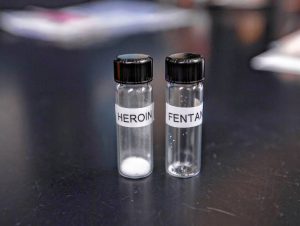While our country continues to struggle with an opioid epidemic, the Centers for Disease Control and Prevention (CDC) reported an alarming uptick of deaths associated with methamphetamine use. Provisional data from the CDC estimated approximately 13,000 deaths involved methamphetamine nationwide in 2018, twice as many as 2015.
A study published in the JAMA Network Open also examined trends in positivity for methamphetamine, cocaine, and heroin, with and without illicit fentanyl. Researchers concluded that methamphetamine-related overdose deaths may continue to increase.
Lethal combination
Using opioids and methamphetamine can lead to life-threatening consequences. The latest data available from the CDC’s Morbidity and Mortality Weekly Report (MMWR) showed that opioids were associated with half of the deaths involving meth in 2017. The CDC also said, “Meth and related drugs, including prescription stimulants, now play a role in more deaths than all opioids combined, including painkillers, heroin and fentanyl.”
What is meth?
Methamphetamine, sometimes called meth, is a highly addictive stimulant. It can be taken orally, smoked, snorted, or injected. Even small amounts of methamphetamine can cause irritability, sleeplessness, rapid heart rate, irregular heartbeat, and increased blood pressure. There is no government-approved medication to treat methamphetamine addiction or reduce withdrawal and cravings for the drug. A meth overdose may lead to heart attack, stroke, or issues with the body’s organs.
Clandestine and homegrown labs once created an abundance of meth in our country in the 1990s and early 2000s. However, laws curbed that supply when pharmacies and retailers restricted access to ingredients found in over-the-counter medications like pseudoephedrine used to manufacture meth.
Most of the methamphetamine in the U.S. comes from Mexico and its transactional criminal organizations, according to the National Institute of Drug Abuse. It is produced to be “very pure, potent, and low cost.” The U.S. Customs and Border Protection concurs and says that meth seizures from Mexico have increased dramatically in the past four to five years.
Meth today is more powerful than ever. Despite warnings from health experts about its dangers, many communities are experiencing more meth use and addiction, which can also impact the workplace. To see trends in methamphetamine positivity in the American workforce, employers can reference the latest Quest Diagnostics Drug Testing Index™ report.
Read our blog about methamphetamine’s comeback in Midwestern and Southern states of rural America.
Drug Testing Needs Assessment – Complete the assessment to determine the drug testing solution that best matches your needs.
For more information about drug testing and adding methamphetamine to your drug screening program, visit our website or contact us online.
 Your Privacy Choices
|
Privacy Notices
|
Terms
|
Language Assistance / Non-Discrimination Notice | Asistencia de Idiomas / Aviso de no Discriminación | 語言協助 / 不䈚視通知
Your Privacy Choices
|
Privacy Notices
|
Terms
|
Language Assistance / Non-Discrimination Notice | Asistencia de Idiomas / Aviso de no Discriminación | 語言協助 / 不䈚視通知



















While our country continues to struggle with an opioid epidemic, the Centers for Disease Control and Prevention (CDC) reported an alarming uptick of deaths associated with methamphetamine use. Provisional data from the CDC estimated approximately 13,000 deaths involved methamphetamine nationwide in 2018, twice as many as 2015.
A study published in the JAMA Network Open also examined trends in positivity for methamphetamine, cocaine, and heroin, with and without illicit fentanyl. Researchers concluded that methamphetamine-related overdose deaths may continue to increase.
Lethal combination
Using opioids and methamphetamine can lead to life-threatening consequences. The latest data available from the CDC’s Morbidity and Mortality Weekly Report (MMWR) showed that opioids were associated with half of the deaths involving meth in 2017. The CDC also said, “Meth and related drugs, including prescription stimulants, now play a role in more deaths than all opioids combined, including painkillers, heroin and fentanyl.”
What is meth?
Methamphetamine, sometimes called meth, is a highly addictive stimulant. It can be taken orally, smoked, snorted, or injected. Even small amounts of methamphetamine can cause irritability, sleeplessness, rapid heart rate, irregular heartbeat, and increased blood pressure. There is no government-approved medication to treat methamphetamine addiction or reduce withdrawal and cravings for the drug. A meth overdose may lead to heart attack, stroke, or issues with the body’s organs.
Clandestine and homegrown labs once created an abundance of meth in our country in the 1990s and early 2000s. However, laws curbed that supply when pharmacies and retailers restricted access to ingredients found in over-the-counter medications like pseudoephedrine used to manufacture meth.
Most of the methamphetamine in the U.S. comes from Mexico and its transactional criminal organizations, according to the National Institute of Drug Abuse. It is produced to be “very pure, potent, and low cost.” The U.S. Customs and Border Protection concurs and says that meth seizures from Mexico have increased dramatically in the past four to five years.
Meth today is more powerful than ever. Despite warnings from health experts about its dangers, many communities are experiencing more meth use and addiction, which can also impact the workplace. To see trends in methamphetamine positivity in the American workforce, employers can reference the latest Quest Diagnostics Drug Testing Index™ report.
Read our blog about methamphetamine’s comeback in Midwestern and Southern states of rural America.
Drug Testing Needs Assessment – Complete the assessment to determine the drug testing solution that best matches your needs.
For more information about drug testing and adding methamphetamine to your drug screening program, visit our website or contact us online.